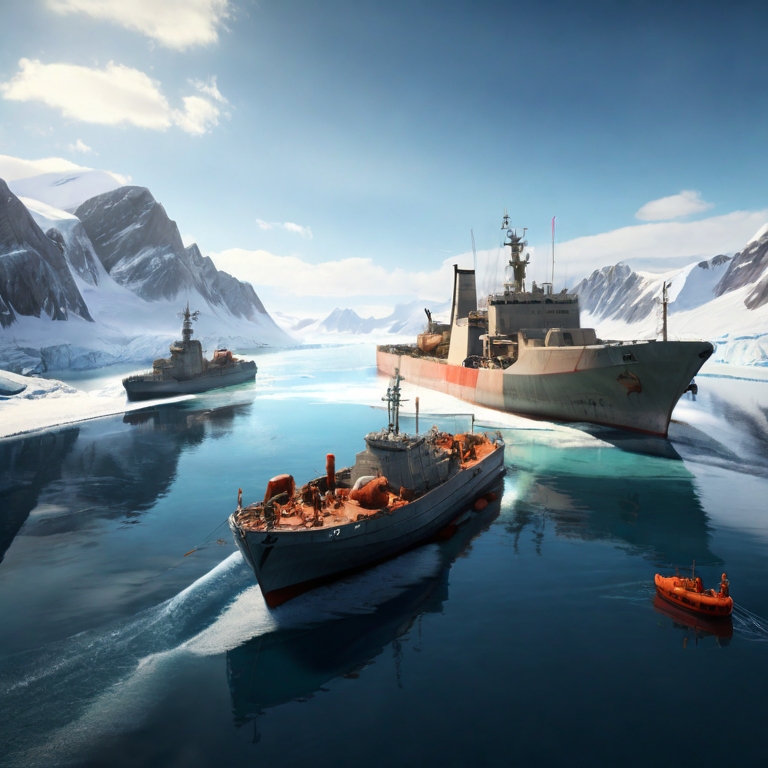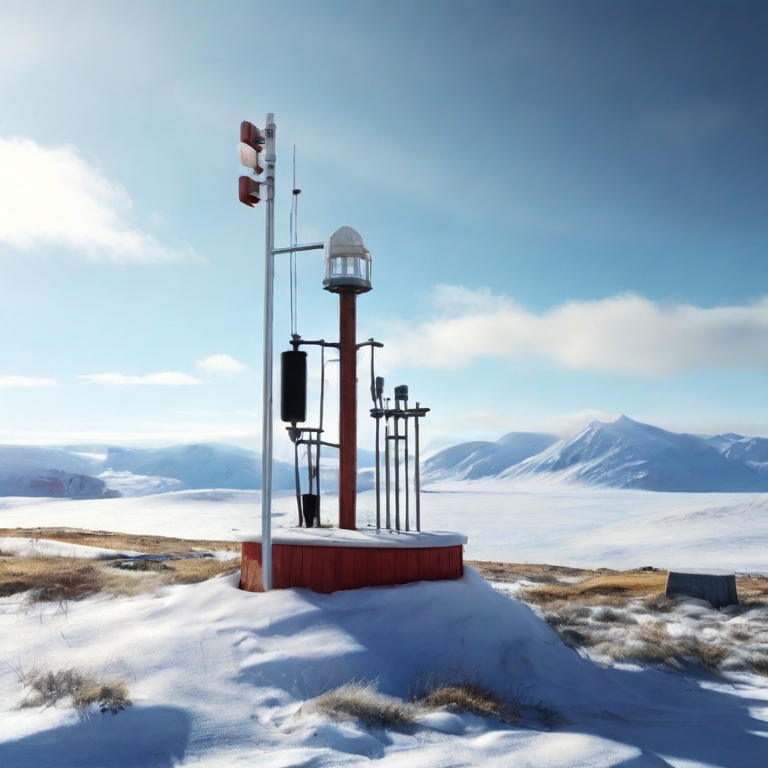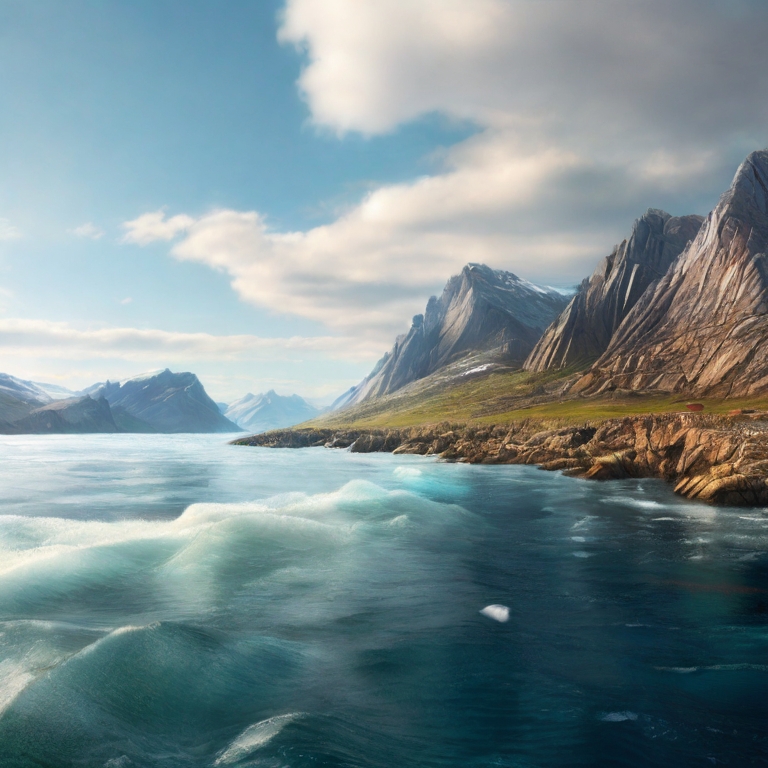Greenland is often overlooked when considering World War 2. Its strategic location, nestled between the North Atlantic and the Arctic, made it a key player in the global conflict.
It has an abundance of natural resources, particularly cryolite, a mineral essential for aluminum production, further enhanced its significance. Moreover, Greenland’s unique weather conditions, with their unpredictable patterns and harshness, added another layer of complexity to the wartime equation.
In this article, we will explore the significance of Greenland during World War 2, its strategic position and resources made it a focal point for both Allied and Axis powers.
1. Greenland’s Strategic Location

Greenland’s position in the North Atlantic and Arctic made it a crucial link between North America and Europe. Both Allied and Axis powers recognized its importance for military operations and access to vital shipping routes.
Its proximity to both North America and Europe made it a key location for military operations and the movement of troops and supplies.
For the Allies, Greenland’s strategic location was particularly important. It provided a safe haven for Allied ships and aircraft traveling between North America and Europe. The Allies established military bases in Greenland, which served as refueling stops and staging points for air and naval operations.
The Axis powers also recognized the strategic importance of Greenland. They sought to disrupt Allied shipping routes and establish their own presence in the region.
German submarines operated in the waters around Greenland, attacking Allied convoys and attempting to cut off the supply lines between North America and Europe.
2. The Importance of Greenland’s Cryolite Mining in World War 2

Greenland possessed the world’s largest reserves of cryolite, a mineral essential for the production of aluminum.
Aluminum was a critical material for the construction of aircraft, as it is lightweight and strong. During World War 2, the demand for aluminum skyrocketed as both the Allied and Axis powers sought to produce more and more aircraft.
Greenland’s cryolite mines became a strategic asset in the war effort.
The Allies, in particular, relied heavily on Greenland’s cryolite to meet their aluminum needs. The United States, the world’s leading producer of aircraft, imported large quantities of cryolite from Greenland to support its massive aircraft production program.
The cryolite mines in Greenland were operated by a Danish company, Kryolitselskabet Øresund. The company worked closely with the Allied governments to ensure that the cryolite was transported safely to Allied factories.
Despite the efforts of German submarines to disrupt shipping in the North Atlantic, the Allies were able to maintain a steady supply of cryolite from Greenland.
The importance of Greenland’s cryolite mining to the Allied war effort cannot be overstated. Without access to Greenland’s cryolite, the Allies would have faced a severe shortage of aluminum, which would have crippled their aircraft production and weakened their ability to wage war in the air.
3. Allied Presence in Greenland
The United States, with the consent of the Danish government, established several military bases in Greenland during World War 2.
These bases played a crucial role in supporting Allied operations in the North Atlantic.
The most important Allied base in Greenland was Bluie West One, located near the southern tip of the island. Bluie West One served as a refueling stop for Allied aircraft flying between North America and Europe. It also provided logistical support for naval operations in the North Atlantic.
Other Allied bases in Greenland included:
- Bluie East Two, located on the east coast of Greenland, served as a weather station and a base for long-range reconnaissance flights.
- Sondrestromfjord, located on the west coast of Greenland, was a major air base that provided support for anti-submarine patrols and long-range bombing missions.
- Narsarsuaq, located in southern Greenland, was a seaplane base that provided support for naval operations in the North Atlantic.
The bases in Greenland provided a safe haven for Allied ships and aircraft, and they also served as staging points for attacks on German shipping and submarines.
The bases in Greenland also helped to ensure that the Allies had the logistical support they needed to defeat the German U-boats and maintain the flow of supplies to Europe.
4. Greenland and Weather Forecasting
Greenland’s weather stations played a crucial role in weather forecasting during World War 2.
Both the Allies and the Axis powers relied on accurate weather forecasts to plan their military operations.
The weather in Greenland is notoriously unpredictable and harsh. Sudden changes in weather conditions could have a significant impact on military operations, particularly air raids and naval movements. Accurate weather forecasts were essential for ensuring the safety of troops and the success of military missions.
Allied Weather Stations in Greenland
The Allies established a number of weather stations in Greenland to collect meteorological data.
These weather stations were often located in remote and inhospitable locations, and the personnel who operated them faced many challenges, including extreme cold, high winds, and isolation.
The data collected by the weather stations in Greenland was transmitted to Allied headquarters, where it was used to produce weather forecasts. These forecasts were then used to plan air raids, naval movements, and other military operations.
German Weather Stations in Greenland
The Germans established a number of weather stations in Greenland, particularly in the northeastern part of the island. These weather stations were often located in remote and inaccessible locations, and they were staffed by highly trained personnel.
The German weather stations in Greenland were part of a larger network of weather stations that the Germans operated throughout the Arctic.
The Germans also attempted to disrupt the Allied weather stations in Greenland. They conducted bombing raids on Allied weather stations, and they also sent agents to sabotage the stations.
The Allies were aware of the German weather stations in Greenland, and they took steps to counter them. The Allies conducted their own raids on German weather stations.
The battle for control of Greenland’s weather stations was a key aspect of the intelligence war in the North Atlantic. Both sides sought to gain access to the most accurate weather data possible, and they used a variety of methods to achieve this goal.
5. Intelligence Struggle

Greenland became a battleground for intelligence gathering and surveillance during World War 2.
The Allies and the Axis powers also established listening posts in Greenland to intercept enemy communications. These listening posts were often located on remote mountaintops or along the coast.
The intelligence struggle in Greenland was a high-stakes game. Both sides were eager to gain access to the most accurate information possible, and they used a variety of methods to achieve this goal.
The Allies had a number of advantages in the intelligence struggle in Greenland.
They had better access to resources, and they were able to establish more weather stations and listening posts than the Axis powers.
Allied listening posts in Greenland:
- Bluie East Two: Located on the east coast of Greenland, Bluie East Two was a major Allied listening post. It was established in 1942 and operated until the end of the war. Bluie East Two was responsible for monitoring German naval and air traffic in the North Atlantic.
- Sondrestromfjord: Located on the west coast of Greenland, Sondrestromfjord was another major Allied listening post. It was established in 1941 and operated until the end of the war. Sondrestromfjord was responsible for monitoring German submarine traffic in the North Atlantic.
- Narsarsuaq: Located in southern Greenland, Narsarsuaq was a smaller Allied listening post. It was established in 1941 and operated until the end of the war. Narsarsuaq was responsible for monitoring German air traffic in the North Atlantic.
Axis listening posts in Greenland:
- Eismitte: Located in northeastern Greenland, Eismitte was the main German listening post in Greenland. It was established in 1942 and operated until 1943, when it was abandoned due to harsh weather conditions. Eismitte was responsible for monitoring Allied ship and aircraft movements in the North Atlantic.
- Nordostrundingen: Located on the northeastern tip of Greenland, Nordostrundingen was a smaller German listening post. It was established in 1943 and operated until the end of the war. Nordostrundingen was responsible for monitoring Allied ship and aircraft movements in the Arctic Ocean.
6. Greenland: Cold War Legacy
Greenland’s strategic importance continued into the Cold War era.
The island’s location and resources made it a potential flashpoint for superpower rivalry.
Greenland’s location between North America and Europe made it a key strategic location for both the United States and the Soviet Union. The island was also home to valuable resources, including cryolite, uranium, and rare earth minerals.
The United States and the Soviet Union both sought to establish a presence in Greenland during the Cold War. The United States was able to secure a long-term lease for the Thule Air Base in northern Greenland. The Thule Air Base was a key part of the United States’ early warning system for detecting Soviet missile launches.
The Soviet Union also attempted to establish a presence in Greenland. In 1952, the Soviet Union approached Denmark with a proposal to build a scientific research station in Greenland. The Danish government rejected the Soviet proposal, but the Soviets continued to press for access to Greenland.
The United States was concerned that the Soviet Union would use Greenland as a base for military operations. In 1961, the United States and Denmark signed an agreement that gave the United States the right to veto any Danish agreement with a third country that would allow the third country to establish a military presence in Greenland.
7. Lessons for the Modern Era
Geopolitical Significance of the Arctic
The Arctic region is becoming increasingly important due to climate change and resource exploration.
Greenland’s strategic location highlights the need for cooperation and responsible management of the Arctic.
Climate change is causing the Arctic ice to melt at an alarming rate. This is opening up new shipping routes and making it easier to access the Arctic’s vast natural resources, including oil, gas, and minerals.
The Arctic is also becoming increasingly important for military purposes. The melting ice is making it easier for submarines and other military vessels to operate in the Arctic.
Greenland is the largest island in the Arctic, and it has a long coastline that borders the Arctic Ocean.
Greenland is also home to a number of important natural resources, including cryolite, uranium, and rare earth minerals.
Greenland: Importance of Resources
Greenland is home to a number of critical resources, including cryolite, uranium, and rare earth minerals. These resources are essential for a variety of industries, including the technology and defense industries.
The increasing demand for resources highlights the need for cooperation and sustainable resource management. Nations need to work together to ensure that resources are managed in a sustainable way.
Greenland: Weather and Climate Data
Accurate weather and climate data are essential for various sectors, including defense, agriculture, and disaster management.
International cooperation is needed to improve data sharing and forecasting capabilities.
Greenland is a key location for weather and climate data collection. Greenland is located in the middle of the North Atlantic Ocean, and it is surrounded by the Arctic Ocean. This makes Greenland an ideal location for collecting data on weather patterns and climate change.
Greenland: Intelligence and Surveillance
The struggle for intelligence and surveillance in Greenland during World War 2 foreshadowed the modern era of cyber warfare and information dominance.
Greenland is a key location for intelligence and surveillance. Greenland is located in a strategic location between North America and Europe, and it is home to a number of important military bases.
Nations must balance national security concerns with the responsible use of intelligence gathering technologies.







